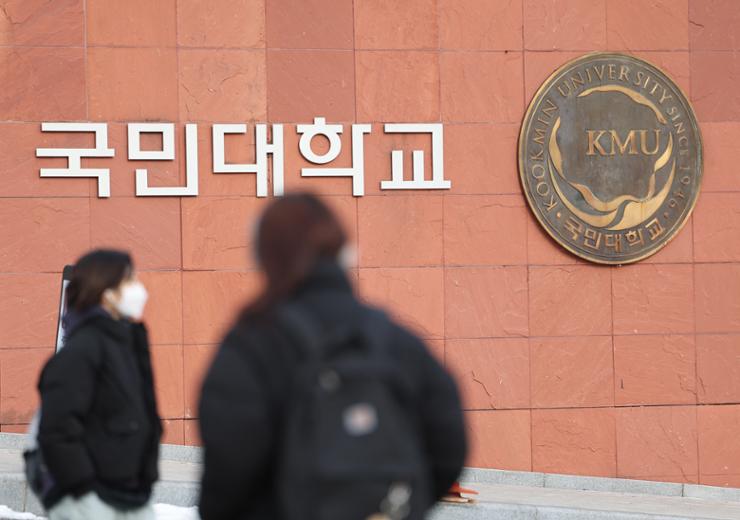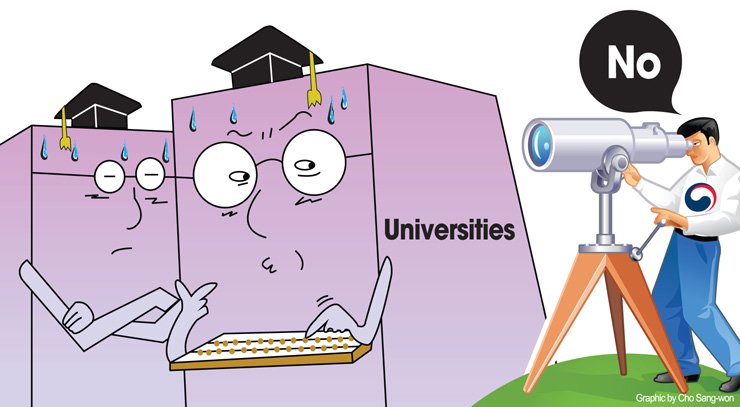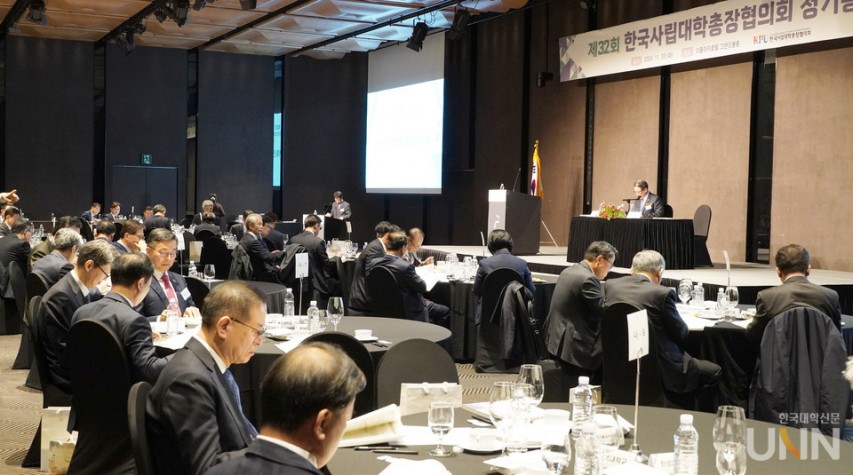[Campus] After 16 Years, Tuition Fees Are Rising Again
The long-lasting freeze on tuition fees appeared to be coming to an end. In January 2025, most South Korean universities raised tuition due to financial difficulties. However, the Ministry of Education (MOE) has requested that tuition fees remain frozen, as they have been for the past two decades.

Entrance of Kookmin University
Photo: The Korea Times (koreatimes.co.kr)
Tuition Fee Increases for the 2025 Academic Year
Most private universities decided to increase tuition fees at the beginning of the year. Leading the wave, Sogang University raised its tuition by 4.85% on December 26. On January 2, Kookmin University followed, raising tuition by 4.97%. This marks the first tuition increase among private universities.
Following this decision, several universities announced tuition hikes for the 2025 academic year. On January 31, Kyung Hee University (KHU), Korea University, Dongguk University, University of Seoul, Sungkyunkwan University, Yonsei University, Ewha Womans University, Sungshin Womans University, Chung-Ang University, Hankuk University of Foreign Studies, and Hanyang University confirmed their tuition increases. KHU decided on a 5.10% increase.
The move by these universities was anticipated last year. According to a survey conducted by the Korean Association of Private University Presidents (KAPUP) in November, 48 out of 90 respondents stated they planned to raise tuition fees for the 2025 academic year. Meanwhile, only four universities responded that they would not increase tuition, while 38 universities said they were still deliberating. Notably, no universities planned to decrease tuition fees.
The 32nd meeting of the Korea Association of Private University Presidents on last November
Photo: UNN (news.unn.net)
Reasons Behind Raised Tuition Fees
Financial difficulties appear to be the primary reason behind the tuition increases. According to a KAPUP survey conducted on January 7, university presidents from 151 institutions cited tuition hikes as their top priority.
Respondents argued that financial constraints hinder efforts to enhance the quality of higher education. Due to the prolonged tuition freeze, 97.8% of respondents said that expanding and upgrading hightech laboratory equipment was challenging. Additionally, 96.6% noted that recruiting talented faculty members had become difficult. Between 80% to 90% of respondents cited difficulties in academic management, curriculum revision, and university assessments.
The primary areas for using the increased tuition revenue align with these difficulties. Universities prioritize attracting excellent professors, hiring staff, and improving student welfare and facilities.
The root of the issue lies in the structural dependence of private universities on tuition. According to KHU’s 2023 financial report, the university’s total income was 497.1 billion won, with tuition fees contributing 304 billion won, making up 61.2% of total income. Other universities show similar patterns. According to the Korea Advancing Schools Foundation’s 2020 financial report, private universities’ tuition dependency rates remained above 50% each year—54.8% in 2015, 54.2% in 2016, 53.3% in 2017, 54.1% in 2018, and 53.7% in 2019.
Recognizing these financial challenges, universities have been working to reduce their dependence on tuition by implementing alternative revenue-generating measures. According to the KHU Office of Finance & Planing (OFP), the university has introduced initiatives such as renting campus facilities, establishing non-degree programs, and expanding donation campaigns to ease students’ financial burden.
The MOE’s Continued Request for a Tuition Freeze
Despite the financial difficulties of private universities, the MOE requested to maintain the tuition freeze. Minister of Education Lee Ju-ho sent a letter to all universities urging them to continue the freeze.

The conflict between universities and MOE
Photo: The Korea Times (koreatimes.co.kr)
In the letter, the MOE argued that the tuition freeze is necessary to reduce the financial burden on students and their families, allowing them to focus on their studies without economic concerns. The MOE stated, “We must consider the current severe national and international economic situation and the burden on students and their parents.”
Is the Tuition Freeze Still Sustainable?
Without additional alternatives, the tuition freeze is increasingly seen as unsustainable. To compensate for financial losses caused by the
freeze, the MOE introduced National Scholarship Type Ⅱ in 2012, which provides financial support to universities that freeze or lower tuition. According to the MOE, this initiative has allowed universities to maintain the freeze while securing billions of won in government support. However, the OFP stated, KHU received 34.5 billion won in total scholarship support, but only three billion won came from Type Ⅱ. This suggests that the financial aid provided through this scholarship is too minimal.
Despite the government scholarship, maintaining the freeze may no longer be a viable option, especially as tuition policies are revised in response to inflation. The Higher Education Act, revised in 2010, stipulates that tuition increases cannot exceed the average consumer price index over the past three years. For 2025, the legal tuition increase limit is set at 5.49%. Raising tuition fees to this limit would generate more revenue than the funding provided by National Scholarship Type Ⅱ.
According to the OFP, KHU expects to secure an additional 11 billion won if it raises tuition to the maximum allowable rate. This would amount to seven to eight billion won more than the current National Scholarship Type Ⅱ funding. With rising financial challenges, South Korean universities have started increasing tuition fees after years of a prolonged freeze. However, the MOE remains firm in its stance, continuing to advocate for the tuition freeze through National Scholarship Type Ⅱ. Moving forward, the key challenge will be finding a common ground between universities and government officials to determine the best path for the future of higher education.
There are no registered comments.
- 1
- 2
- 3
- 4
I agree to the collection of personal information.


